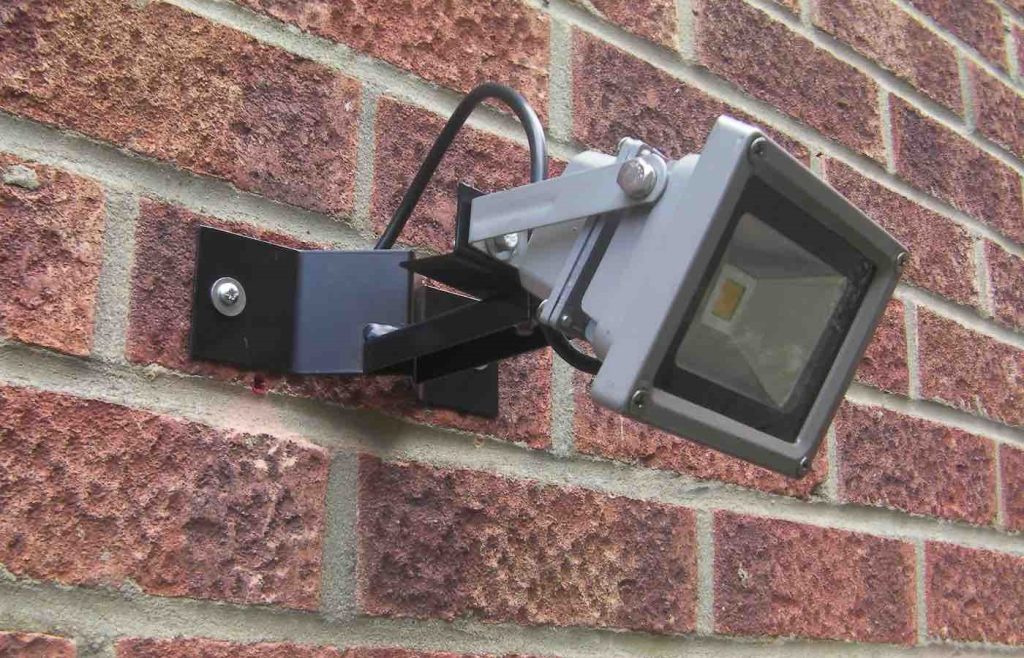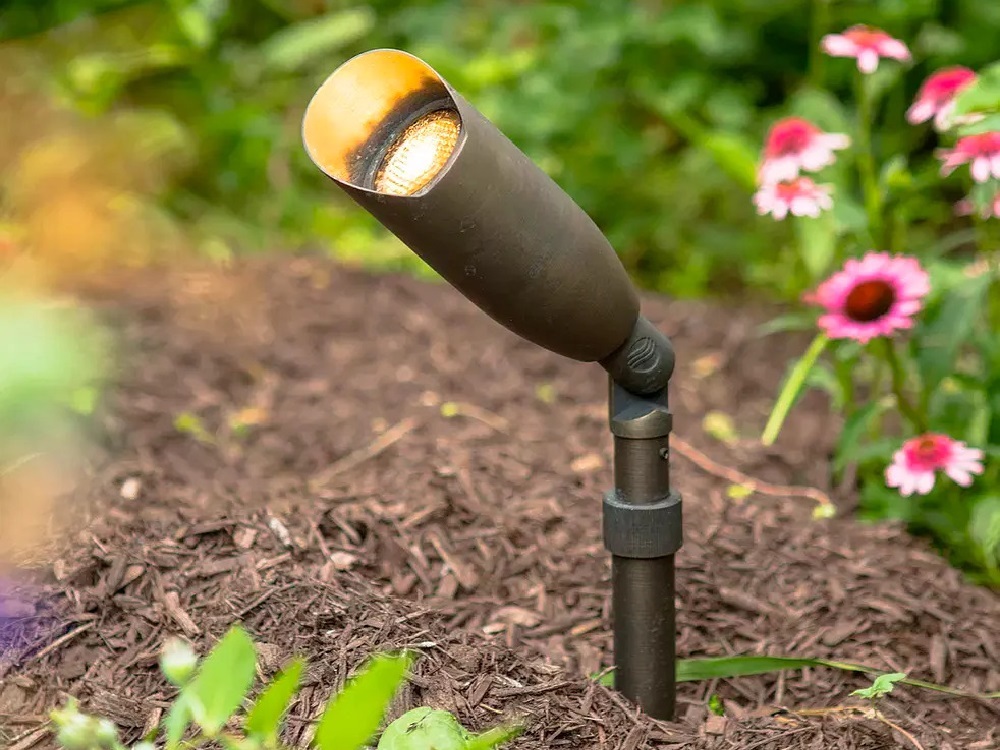Embracing the Night: A Guide to Landscape Lighting
The Luminous Artistry: Understanding Flood and Spot Landscape Lighting
Flood and spot landscape lighting are two paramount techniques in the vast galaxy of outdoor illumination. Both play crucial roles in sculpting nocturnal landscapes, yet each offers a unique approach to light distribution.
A floodlight is a broad-beam, high-intensity artificial light. By casting a wide spread of light, typically over a 40-degree beam angle, it engulfs large areas with an even glow. It brings forth an expansive wash of light that bathes exterior expanses or architectural elements in luminous radiance.
Contrastingly, spotlighting is defined by its narrow beam angle – typically less than 30 degrees. Spotlights offer directed, pinpointed illumination, focusing on specific features within the landscape. They act as visual maestros, conducting symphonies of light upon individual plantings or statuary.
Both floodlights and spotlights come in various forms and sizes and can utilize different types of bulbs, such as LEDs or halogens. The choice between them depends largely on the area you wish to illuminate and the desired effect you want to achieve.
Shining through Darkness: The Importance of Landscape Lighting
Landscape lighting is more than mere outdoor decoration – it’s about improving aesthetics while enhancing safety and security measures for residential or commercial areas. With properly placed fixtures that cast soft pools or sharp beams of light, one can illuminate dark corners and reduce potential hazards around walkways, stairs, or decks while deterring unwanted visitors from intruding into your personal space after dusk.
In addition to providing functional benefits like improved visibility and increased security at night, these lights also narrate tales about your property’s architecture; they emphasize shapes and textures, creating dramatic scenes after sunset that daylight simply cannot offer. They give depth to the night canvas and bring life to the landscape in the quiet hours, adding a whole new dimension of beauty to your property.
Furthermore, landscape lighting can increase the usability of your outdoor spaces. With proper lighting, patios, pools, and children’s play areas become enjoyable at all times, day or night. The potential of landscape lights lies not merely in their luminosity but also in their capacity to transform ordinary spaces into extraordinary experiences. They set moods and evoke emotions with their sublime glow or high-contrast drama. Whether it’s an intimate garden soiree under diffused floodlights or a clear path marked by precise spotlights, every lit scene tells a story.
So whether you’re considering floodlights or spotlights for your landscape lighting project, remember that both of these tools are at your disposal to create an inviting exterior that stands out after sundown. It just takes some planning and creativity to ensure these lights work together harmoniously, creating spaces that are as functional as they are stunning.
Understanding the Basics of Landscape Lighting
A comprehensive grasp of the fundamental aspects of landscape lighting is pivotal in making informed decisions about whether to opt for flood or spot lights. This section elucidates these basic principles, helping you distinguish between these two types of lights and understand the science behind light intensity and direction.
Differentiating Between Flood and Spot Landscape Lighting
Landscape lighting, while seemingly straightforward, actually consists of several different types of lights, each with their own specific characteristics and uses. The two primary styles we’ll be focusing on here are floodlights and spotlights, distinct in their beam spread – the angle at which light is dispersed from the fixture.
Floodlights have a wide beam spread (typically anywhere from 40 to 120 degrees), allowing them to illuminate large areas effectively. Conversely, spotlights have a narrow beam spread (usually less than 45 degrees), making them ideal for controlled, focused illumination.
Understanding this key difference – broad versus focused lighting – is essential when planning your landscape lighting setup. It can significantly influence both aesthetics and functionality in your outdoor space.
Characteristics of Flood Lights
Flood lights are often considered the workhorse among landscape lighting fixtures due to their versatility. Their most notable feature is their wide-angle beam distribution that covers vast areas with light. Typically ranging from 40 to 120 degrees in spread angle as mentioned earlier, they cast a diffused light that softens edges and minimizes shadows.

Besides providing lighting for safety or security purposes (like driveway or backyard lighting), flood lights can also accentuate landscape features such as lawns, trees, or walls by washing them with ample ambient light. Furthermore, due to their robust light output covering a larger area, a lesser number of fixtures might be needed compared to other types of lights, which not only eases the installation process but could also be more cost-effective over time.
Characteristics of Spot Lights
Spot lights, on the other hand, have a much narrower beam angle (usually less than 45 degrees). These lights produce a concentrated, intense beam of light that “spots” or emphasizes specific features in your landscape. If you desire to highlight a unique architectural aspect of your home’s exterior or want to draw attention to a particular tree or piece of art in your yard, spotlights would be your go-to choice.
The narrow column of light they project helps create depth and drama via contrasts between light and shadow. Albeit not suitable for overall general lighting due to their tight focus, their tailored brightness makes them perfect tools for visual storytelling in your outdoor space by adding dimensionality and visual interest.
The Science Behind Light Intensity and Direction
Lighting design isn’t just about choosing the right fixtures; it’s also heavily rooted in understanding the science behind light intensity and direction. This knowledge helps ensure a harmonious balance between lighted objects and their surroundings. Intensity refers to the amount of light emitted from a source – measured in lumens – which directly influences how prominently an object is lit.
More lumens equate to brighter visibility, whereas fewer lumens give off softer lighting. Understanding this can help you choose the appropriate fixtures (flood or spot) based on what you aim to illuminate and how bright you want it to appear. Directionality pertains to how light travels from its source, which can drastically affect the mood and functionality of spaces.
Up-lighting creates drama but might introduce harsh shadows; side-lighting accentuates textures, while down-lighting is ideal for pathways or stairs as it provides clear visibility without glaring into eyes. By paying heed to these fundamental elements – type and characteristics of lights, along with principles of intensity and directionality – one can create an aesthetically pleasing yet functionally efficient landscape lighting design.
Shedding Light on Applications
Flood lights and spot lights both play pivotal roles in landscape lighting. However, their applications differ based on the area they need to illuminate.
Flood Lights: The Guardians of Landscape
Flood lights are often used for security purposes owing to their wide-angle illumination, which makes them highly effective at deterring potential intruders. They cast an expansive light that bathes large areas in brightness, making them ideal for highlighting significant structures or landscaping features such as a beautiful old tree or a water feature complementing your compound’s aesthetics.
Spot Lights: The Maestros of Articulation

Spot lights, on the other hand, serve more specific purposes. Their narrow beam casts focused light, making them perfect for accentuating architectural details such as sculptures or unique building features. Moreover, these lights can be strategically placed to illuminate pathways leading guests safely around your garden and bring attention to particular plants that you wish to showcase.
The Artistry Behind Effective Landscape Lighting
Creating a stunning landscape lighting design involves more than just placing fixtures randomly around your property. It is an art that requires thoughtfulness and understanding.
The Dance of Light and Shadow
Striking a balance between light and shadow is crucial in achieving an alluring nightscape. Over-illumination can make the area feel garish and uncomfortable, while insufficient lighting may fail to highlight the beauty inherent in your landscape.
A Symphony of Color Temperature
Enhanced aesthetics also stem from the color temperature of your lighting fixtures. Warm white light contributes to creating intimate spaces with its cozy glow, while cool white enhances modern landscapes with its crisp illumination.
Positioning: The Conductor’s Baton
Proper positioning differentiates well-illuminated landscapes from poorly lit ones since it dictates the direction and intensity of light. The angle at which the fixtures cast their beams can create dramatic effects, elevating the visual charm of your landscape.
Tools of the Trade: Choosing & Installation
Selecting appropriate lighting equipment is essential to realizing your dreamed landscape nightscape.
The Enlightened Choice
Factors to take into consideration include energy efficiency, durability, and light output. LED floodlights or spotlights are notably energy-efficient compared to their halogen counterparts. Durability is crucial too; thus, consider fixtures made from robust materials that can withstand weather changes. Light output measured in lumens should also be taken into account based on your particular needs.
The DIY versus Professional Installation Squad
While there’s a sense of accomplishment in DIY installations, sometimes professional installation may be better suited for complex projects as they can optimize lighting effects through their experience and expertise.
Staying Bright: Maintenance & Safety Measures
Maintaining an effective lighting system requires consistent effort.
Keep it Gleaming
Regular cleaning and bulb replacement are essential parts of maintenance that ensure optimum lighting performance over long periods.
Your Safety Beacon
Electrical safety measures need to be adhered to during installation and maintenance processes. Ensure all wiring is appropriately insulated and lights are safe from water ingress.
A Glimpse into the Future: Innovative Trends
Advancements in technology have brought new trends in landscape lighting, such as smart lighting systems that offer control over color temperature, brightness, and even timing right at your fingertips using a mobile app. Solar-powered lights too have gained popularity due to their energy efficiency and environmental friendliness.
Crafting Shadows & Silhouettes: Case Studies
A deep dive into a few case studies would show how effective use of floodlights and spotlights in residential and commercial properties can transform the ordinary into extraordinary nightscape masterpieces.
Conclusion: Flood or Spot Landscape Lighting?
The art of landscape lighting is a beautiful blend of scientific understanding, artistic creativity, and technological advancements. Whether it is the broad strokes of floodlights or the intricate details lit by spotlights, each plays a vital role in painting your landscape with light.
As we move towards an eco-friendlier future, utilizing innovative lighting solutions such as smart lights and solar power will only enhance our landscapes further while reducing our carbon footprint, making them not just beautiful sanctuaries but responsible ones too. It’s indeed a bright future we are looking forward to!
You may also be interested in the following posts:
